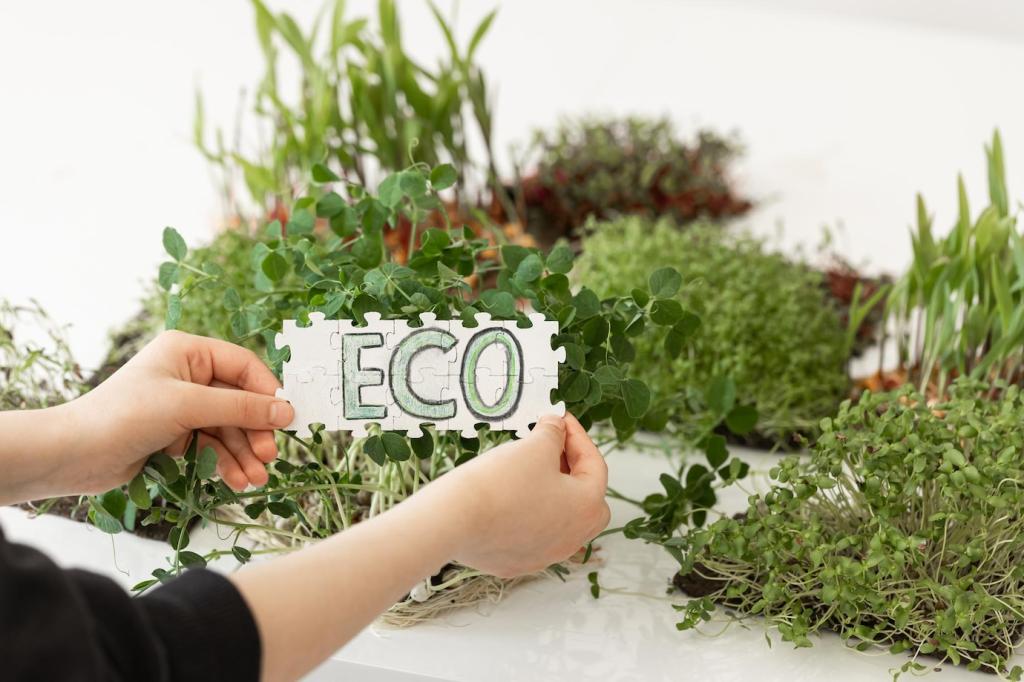Building Trust with Authentic Green Copywriting
Chosen theme: Building Trust with Authentic Green Copywriting. Welcome to a space where sustainability claims meet proof, empathy, and clarity, so readers feel informed, respected, and ready to act alongside you. Join the conversation, share your questions in the comments, and subscribe for weekly trust building prompts, checklists, and real world examples.
From Claims to Credibility: The Foundations of Authentic Green Copy
Ditch empty eco friendly slogans. Replace them with specifics like 85 percent post consumer recycled aluminum, produced with 100 percent wind power in Ohio, cutting transport emissions thirty two percent year over year according to audited freight data.
From Claims to Credibility: The Foundations of Authentic Green Copy
Support each claim with something readers can open and inspect, such as a summarized lifecycle assessment, utility invoices for renewable energy, and recognized certifications like GOTS, FSC, or Energy Star with certificate IDs and audit dates clearly listed.


Show Your Work
A small refill startup once published its messy pilot results. Week one returned bottles cracked; week two improved caps; week three added padding. Broken returns fell seventy percent, and customers stayed because honest reporting turned into shared problem solving.

Center Real People
Feature the warehouse manager who redesigned shipment schedules to combine deliveries and reduce miles, and the customer who mended a jacket rather than buying new. Real names, roles, and little details help readers feel the effort behind every claim.

Admit Imperfections
If your pouch still uses a thin plastic liner, say it openly. Share that it is twelve percent by weight, and you are piloting a compostable alternative in quarter three. Invite readers to subscribe for monthly updates on failures and breakthroughs.



Tone, Language, and Microcopy that Build Trust
Replace abstract phrases with simple explanations. Instead of circularity synergies, say the aluminum can be recycled repeatedly with minimal quality loss. If something is compostable only in industrial facilities, state that plainly and link to a locator for participating sites.

Designing for Readability and Honesty
When charting emissions, include baselines, timeframes, and error ranges. Label axes clearly, show both improvements and setbacks, and provide downloadable CSV files. Invite readers to replicate calculations, reinforcing confidence through transparent, reproducible visualization practices.
Engaging Community for Continuous Accountability
Invite Audits and Questions
Publish a dedicated inbox for impact questions, host monthly open office hours, and create a community advisory circle. Encourage comments beneath reports and commit to response service levels, signaling that dialogue is part of your brand promise, not an afterthought.
Publish a Roadmap and Update It
Share quarterly goals with owners, budgets, and risks. Track what shipped, what slipped, and why. Maintain a changelog of wording updates in your claims pages. Invite readers to vote on priorities and subscribe for roadmap alerts and retrospective summaries.
Turn Customers into Co Researchers
Offer simple testing protocols for home composting or durability trials and recruit volunteer beta testers. Share field data, publish an open dataset, and credit contributors. Co authored posts help transform customers into collaborators who defend your claims with lived experience.
